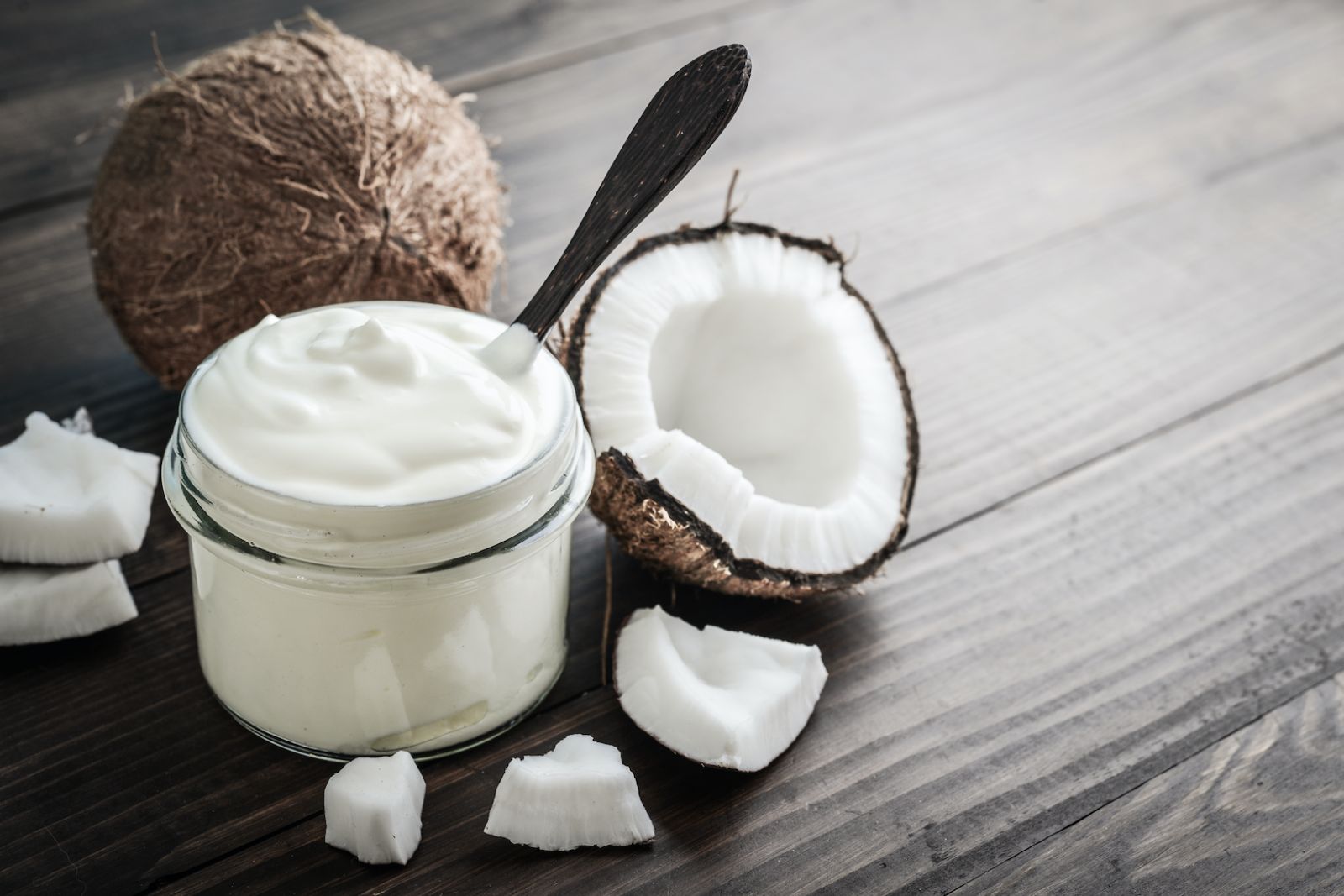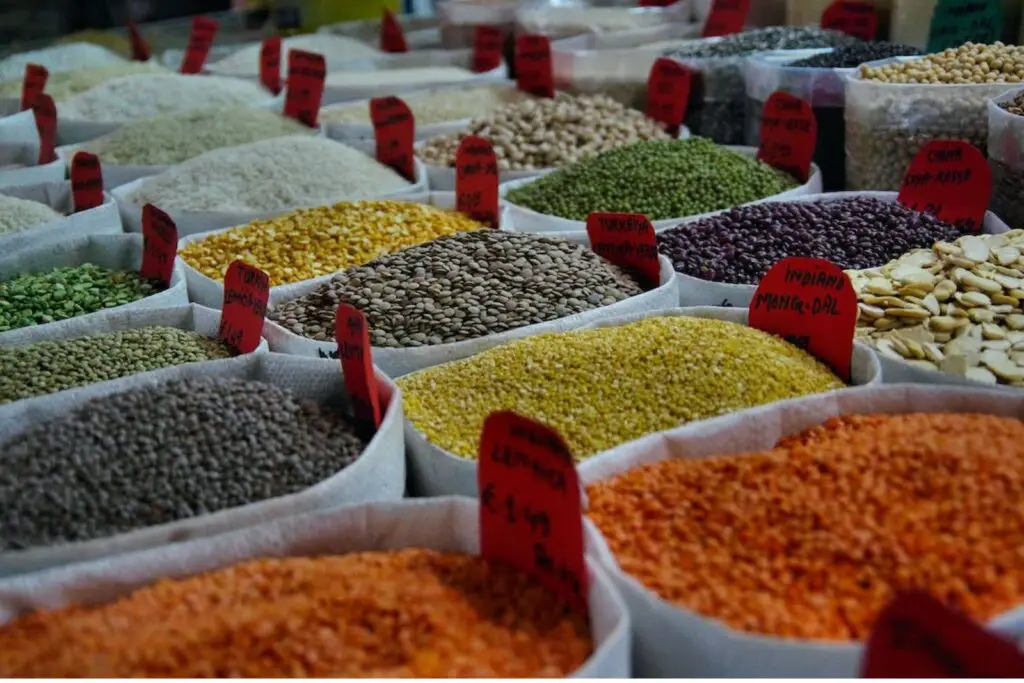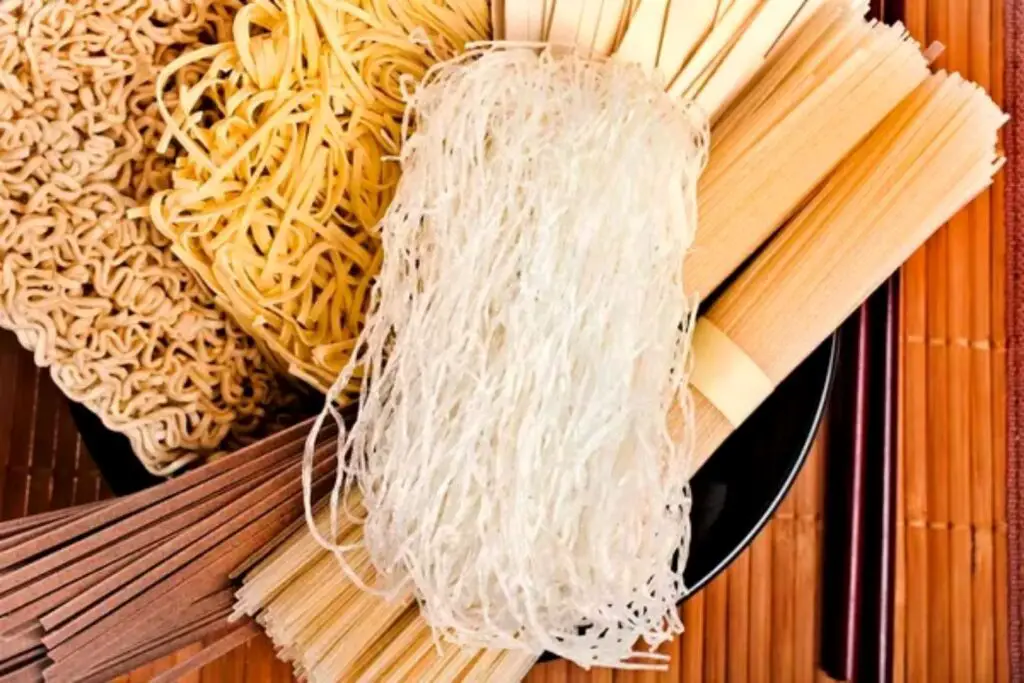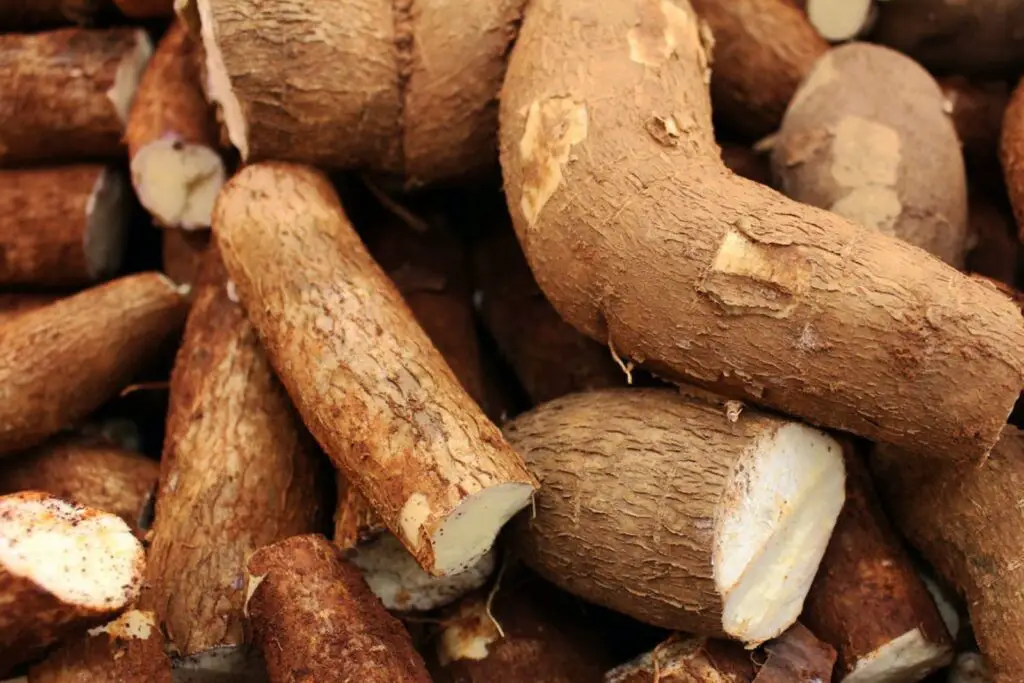
Coconut cream is a thick and creamy substance derived from the flesh of mature coconuts. It is extracted by grating the coconut flesh and then squeezing it to extract the rich, fatty liquid. Coconut cream is often used as a key ingredient in various cuisines, especially in Southeast Asian and Caribbean dishes. It adds a luscious, tropical flavor and texture to curries, desserts, beverages, and sauces. Freezing coconut cream is a great way to extend its shelf life and preserve its creamy consistency for future use in recipes.
Here is a step-by-step guide on how to freeze coconut cream:
Step 1: Choose the right container
When freezing coconut cream, selecting the appropriate container is crucial to maintain its quality and prevent any unwanted flavors or odors. It is recommended to choose a container that is airtight and specifically designed for freezer storage, such as an airtight container or freezer-safe resealable bags.
Using an airtight container ensures that the coconut cream remains sealed and protected from air exposure, which can lead to freezer burn or a loss of flavor and texture. Freezer-safe resealable bags are another excellent option, as they allow for easy portioning and take up less space in the freezer.
Regardless of the container you choose, it is essential to ensure it is clean and free from any lingering odors. Coconut cream can absorb smells easily, so using a container that is odor-free will help maintain the integrity of the coconut cream’s taste and aroma.
Can I freeze coconut cream in its original can?
Freezing coconut cream in its original can is generally not recommended. The liquid content of coconut cream expands when frozen, which can cause the can to burst or become deformed. Additionally, the can’s metal material may affect the flavor and quality of the coconut cream. It is advisable to transfer the coconut cream to a freezer-safe container or resealable bags before freezing for optimal results.
Step 2: Allow the coconut cream to cool
When it comes to freezing coconut cream, allowing it to cool completely before freezing is a crucial step to maintain its quality and prevent the formation of unwanted condensation and ice crystals.
Freshly made coconut cream is often warm or hot due to the extraction process. If you were to immediately transfer the hot or warm coconut cream into the freezer, the temperature difference between the cream and the freezer environment could lead to the formation of condensation.
Condensation occurs when the warm air inside the container comes into contact with the cold freezer environment. This moisture can accumulate on the surface of the coconut cream and eventually freeze, leading to the development of ice crystals. These ice crystals can affect the texture and overall quality of the cream.
Cooling the coconut cream also helps to stabilize its composition before freezing. The cooling process allows the fats in the cream to solidify and distribute evenly, which contributes to a smoother texture once thawed.
To cool the coconut cream, simply leave it at room temperature or refrigerate it until it reaches a cool temperature. This process ensures a more controlled transition from a warm state to a frozen state, preserving the cream’s texture and preventing any undesirable moisture formation.
Step 3: Pour the coconut cream into the container
When freezing coconut cream, transferring it into the chosen container properly is essential for maintaining its quality and ensuring convenient storage. Here’s why it’s important to pour the coconut cream into the container correctly:
- Leaving headspace for expansion: Coconut cream, like many liquids, expands when frozen. It’s crucial to leave some headspace at the top of the container to accommodate this expansion. If the container is filled to the brim, the expanding cream may cause the container to crack or burst, resulting in a messy and potentially hazardous situation in the freezer. Leaving sufficient headspace provides room for the cream to expand without causing any damage.
- Maintaining texture and consistency: Leaving headspace also helps preserve the texture and consistency of the coconut cream. As the cream freezes, it solidifies and expands. By allowing room for expansion, the cream can freeze more evenly, preventing the formation of ice crystals or a hardened layer on the surface. This ensures that the cream retains its creamy and smooth consistency when thawed.
Can I freeze coconut cream in ice cube trays for easy portioning?
Yes, you can freeze coconut cream in ice cube trays for easy portioning. Pour the coconut cream into the ice cube compartments, leaving some space for expansion. Once frozen, transfer the coconut cream cubes into a freezer-safe bag or container to prevent freezer burn and store them for future use.
Step 4: Protect it from freezer burn
To maintain the quality of the frozen coconut cream and prevent freezer burn, it is essential to take steps to protect it during storage. Freezer burn occurs when moisture from the cream evaporates, leaving it dehydrated and causing changes in texture and taste.
To protect the coconut cream from freezer burn, ensure that the container or resealable bag is airtight. An airtight seal prevents air from entering the container and coming into contact with the cream, reducing the risk of moisture loss and freezer burn. This is particularly important because coconut cream can easily absorb odors and flavors from the freezer if not properly sealed.
If you’re using resealable bags instead of a container, it’s important to remove as much air as possible before sealing. Excess air trapped inside the bag can contribute to freezer burn, affecting the quality and flavor of the coconut cream. Squeezing out the air helps create a more compact and airtight environment, minimizing the risk of freezer burn and ensuring the cream’s freshness.
Alternatively, if you are using a container, consider covering the coconut cream with a layer of plastic wrap before sealing the container. This additional layer acts as a barrier, further preventing air and moisture from reaching the cream.
Step 5: Label the package
Labeling the package of frozen coconut cream with the date of freezing is a crucial step for proper organization and ensuring the best quality and taste of the cream when using it later.
By clearly indicating the date of freezing, you can keep track of the storage time and rotation of your frozen coconut cream. It helps you identify the oldest cream in your freezer, allowing you to use it first and prevent any cream from being forgotten or left unused for an extended period.
Using a permanent marker or a label, write the date on the container or bag containing the coconut cream. This ensures that the information remains visible and legible even when stored in the freezer for an extended period.
Having a labeled package allows you to make informed decisions about when to use the frozen coconut cream. While it can generally be stored for several months, knowing the specific freezing date helps you maintain the cream’s optimal quality and avoid using it beyond its recommended storage time.
Step 6: Store in the freezer
Once you have properly labeled the container of coconut cream, it’s time to place it in the freezer for long-term storage. The way you store it in the freezer can impact its quality and ease of access. Here are some important points to consider:
- Position for easy access: Place the labeled container in a spot that allows for easy access. This ensures that you can locate and retrieve the coconut cream conveniently when needed. Consider organizing your freezer and designating a specific section or shelf for frozen items to keep everything well-arranged.
- Efficient use of freezer space: Utilize the freezer space efficiently by stacking and organizing items strategically. Place the container in a way that maximizes the available space and allows for easy identification of the coconut cream. Consider using freezer baskets or bins to keep similar items together and maintain a well-organized freezer environment.
- Avoid stacking heavy items on top: Take care not to stack heavy or bulky items on top of the container of coconut cream. This precaution helps prevent damage to the container, which could potentially lead to leaks or spills. Placing the coconut cream in a more stable and secure position within the freezer helps maintain its integrity and prevents any accidental mishaps.
How long can coconut cream last in the freezer?
Coconut cream can last in the freezer for up to 3 to 6 months. Properly stored in an airtight container or freezer-safe bags, it can maintain its quality, texture, and flavor during this period. However, it is recommended to use the frozen coconut cream within the first 3 months for the best results.
Step 7: Thaw and use frozen coconut cream
When the time comes to use the frozen coconut cream, it’s important to thaw it properly to restore its original consistency and maximize its usability. Follow these steps for successful thawing and utilization of the frozen coconut cream:
- Transfer to the refrigerator: Take the labeled container of frozen coconut cream from the freezer and place it in the refrigerator. Thawing the cream in the refrigerator allows for a slow and controlled thawing process, minimizing any potential bacterial growth and maintaining the quality of the cream.
- Allow overnight thawing: Give the coconut cream sufficient time to thaw in the refrigerator overnight. Thawing gradually at a lower temperature helps preserve the texture and flavor of the cream. Overnight thawing ensures that the cream thaws evenly without any portions remaining frozen.
- Address separation or thickening: After thawing, you may notice that the coconut cream has separated or become thicker. This is a natural occurrence due to the separation of the cream and liquid components. To restore its original consistency, gently stir or whisk the cream until it becomes smooth and well-incorporated again. This will blend the separated components and bring back the creamy texture.
Can I use frozen coconut cream directly in recipes without thawing?
Yes, frozen coconut cream can be used directly in recipes without thawing. However, keep in mind that it might be more challenging to incorporate the frozen cream into certain recipes. Thawing the cream beforehand is usually recommended for better blending and consistency.
Can I use frozen coconut cream directly as a topping for desserts or beverages without thawing?
Using frozen coconut cream directly as a topping for desserts or beverages without thawing is possible. However, keep in mind that the texture may be slightly different from freshly whipped cream, as it will be firmer due to being frozen. Depending on personal preference and the specific recipe, you may choose to thaw the coconut cream partially or fully before using it to achieve the desired consistency.
Other related questions
Can I refreeze coconut cream?
Refreezing coconut cream is generally not recommended. Once coconut cream has been thawed, it undergoes changes in texture and quality due to the freezing and thawing process. Refreezing can further degrade the cream, affecting its taste and consistency. It is best to use the thawed coconut cream immediately or in recipes rather than attempting to refreeze it.
How do I know if the coconut cream has gone bad after being frozen?
After being frozen, coconut cream may experience changes in texture, separation, or loss of flavor. Signs of spoilage include an off smell, mold growth, or a sour taste. If you observe any of these indicators, it is best to discard the coconut cream, as it may have gone bad during the freezing process or due to extended storage.
Can I freeze homemade coconut cream made from fresh coconuts?
Absolutely! Homemade coconut cream made from fresh coconuts can be frozen using the same guidelines. Allow it to cool, pour into a container, protect from freezer burn, label, and date before placing it in the freezer.
Can I freeze coconut cream that has been sweetened or flavored?
Yes, you can freeze coconut cream that has been sweetened or flavored. However, keep in mind that the freezing process may slightly alter the taste and texture of the sweetened or flavored coconut cream when thawed. It is advisable to label the container with the type of sweetener or flavoring used for future reference.
Does freezing coconut cream affect its taste or texture?
Freezing coconut cream can affect its taste and texture to some extent. The freezing process may cause slight changes in the cream’s texture, making it slightly grainy or separated when thawed. Additionally, freezing can lead to a subtle loss of flavor intensity. However, these changes are generally minimal and may not significantly impact the overall quality of the coconut cream.
Can I freeze coconut cream that has been opened but not fully used?
Yes, you can freeze coconut cream that has been opened but not fully used. Transfer the remaining coconut cream to a freezer-safe container or resealable bags, ensuring it is tightly sealed to prevent freezer burn. Freezing the leftover coconut cream helps extend its shelf life and allows you to conveniently use it in future recipes.
Can I freeze coconut cream that has been mixed with other ingredients, such as sugar or vanilla extract?
Yes, you can freeze coconut cream that has been mixed with other ingredients like sugar or vanilla extract. However, it’s important to note that freezing may slightly alter the texture and taste of the mixture when thawed. It is recommended to store the mixture in airtight containers, allowing some headspace for expansion, and labeling it with the ingredients used for future reference.
Can frozen coconut cream be used as a dairy-free alternative in recipes calling for heavy cream?
Yes, frozen coconut cream can be used as a dairy-free alternative in recipes that call for heavy cream. When frozen, coconut cream solidifies and thickens, providing a similar creamy consistency to heavy cream. It adds a rich coconut flavor to dishes and works well in both sweet and savory recipes as a dairy-free substitute for heavy cream.
Can I freeze coconut cream if it has been flavored with spices like cinnamon or cardamom?
Yes, you can freeze coconut cream that has been flavored with spices like cinnamon or cardamom. Freezing will preserve the infused flavors to some extent, although they may mellow slightly upon thawing. It is recommended to store the flavored coconut cream in airtight containers, properly labeled, and use it within the recommended storage time for the best flavor and quality.








